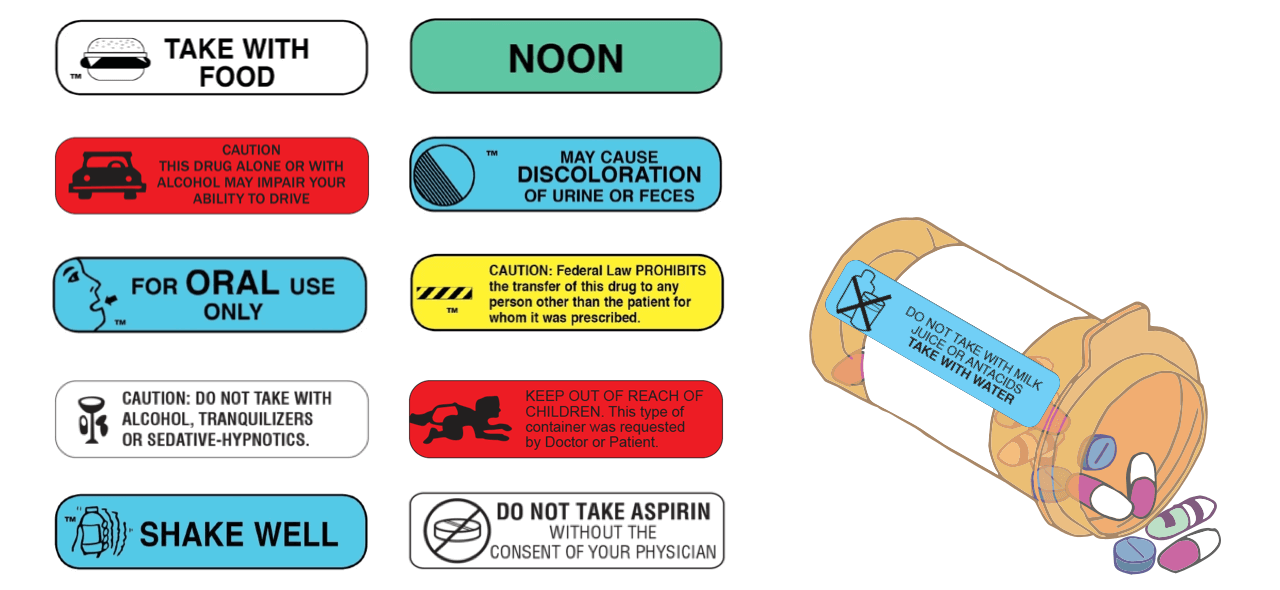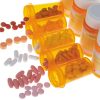- Empty cart.
- Continue Shopping
How to Read Prescription Labels Correctly

Prescription medications play a vital role in treating and managing various health conditions. Understanding how to read prescription labels correctly is essential for ensuring safe and effective medication use.
Medication Name and Strength
Medication Name
The top of the prescription label typically displays the name of the medication. Ensure that the name matches what your healthcare provider told you. If it looks different or unfamiliar, seek clarification from your pharmacist or healthcare provider.
Medication Strength
Next to the medication name, you will find the strength or dosage of the medication. This indicates the amount of the active ingredient in each dose. Verify that the strength matches your prescription.
Dosage Instructions
Dosage Amount
The prescription label specifies how much of the medication you should take per dose. This is often indicated in milligrams (mg), micrograms (mcg), or another unit of measurement. Ensure you understand the prescribed dosage and measure it accurately if necessary.
Frequency and Timing
The label also provides instructions on how often you should take the medication (e.g., once daily, every 8 hours) and when (e.g., with meals, before bedtime). Follow these instructions closely to maintain the medication’s effectiveness.
Duration of Treatment
Some labels indicate the duration of treatment, which tells you how long you should continue taking the medication. If this information is not on the label, consult your healthcare provider for guidance on the treatment duration.
Refill Information
Number of Refills
Prescription labels often mention the number of refills allowed for the medication. If no refills are indicated, it means you need a new prescription from your healthcare provider each time.
Refill Limitations
Pay attention to any limitations on refills, such as needing a new prescription after a specific number of refills or within a certain timeframe.
Warnings and Precautions
Special Instructions
Read any special instructions or precautions on the label. This may include information about taking the medication with or without food, avoiding certain activities, or potential side effects.
Allergy Information
Check for allergy information, especially if you have known allergies to medications or specific ingredients. Inform your healthcare provider and pharmacist of any allergies to prevent adverse reactions.
Dispensing Information
Pharmacy Information
The label includes information about the dispensing pharmacy, including its name, address, and contact information. Verify that you have received your medication from the correct pharmacy.
Prescription Number
The prescription number is essential for tracking your medication history. Keep a record of this number for reference.
Storage Instructions
Temperature
Prescription labels often specify the temperature range at which the medication should be stored. Some medications require refrigeration, while others should be kept at room temperature. Improper storage can affect a medication’s potency.
Light Sensitivity
If the medication is sensitive to light, the label may advise you to store it in a dark container or keep it away from direct sunlight.
Patient Information
Patient Name
Ensure that the patient name on the label matches your name or the name of the person for whom the medication is prescribed.
Healthcare Provider
The label typically includes the name of the prescribing healthcare provider. If you have questions or concerns about the medication, don’t hesitate to contact them for clarification.
Finally, reading prescription labels correctly is crucial for the safe and effective use of medications. Always follow the instructions provided on the label and consult your healthcare provider or pharmacist if you have any doubts or questions about your prescription. By understanding and adhering to the information on the label, you can ensure that you take your medication as prescribed and receive the intended therapeutic benefits while minimizing the risk of adverse effects.








